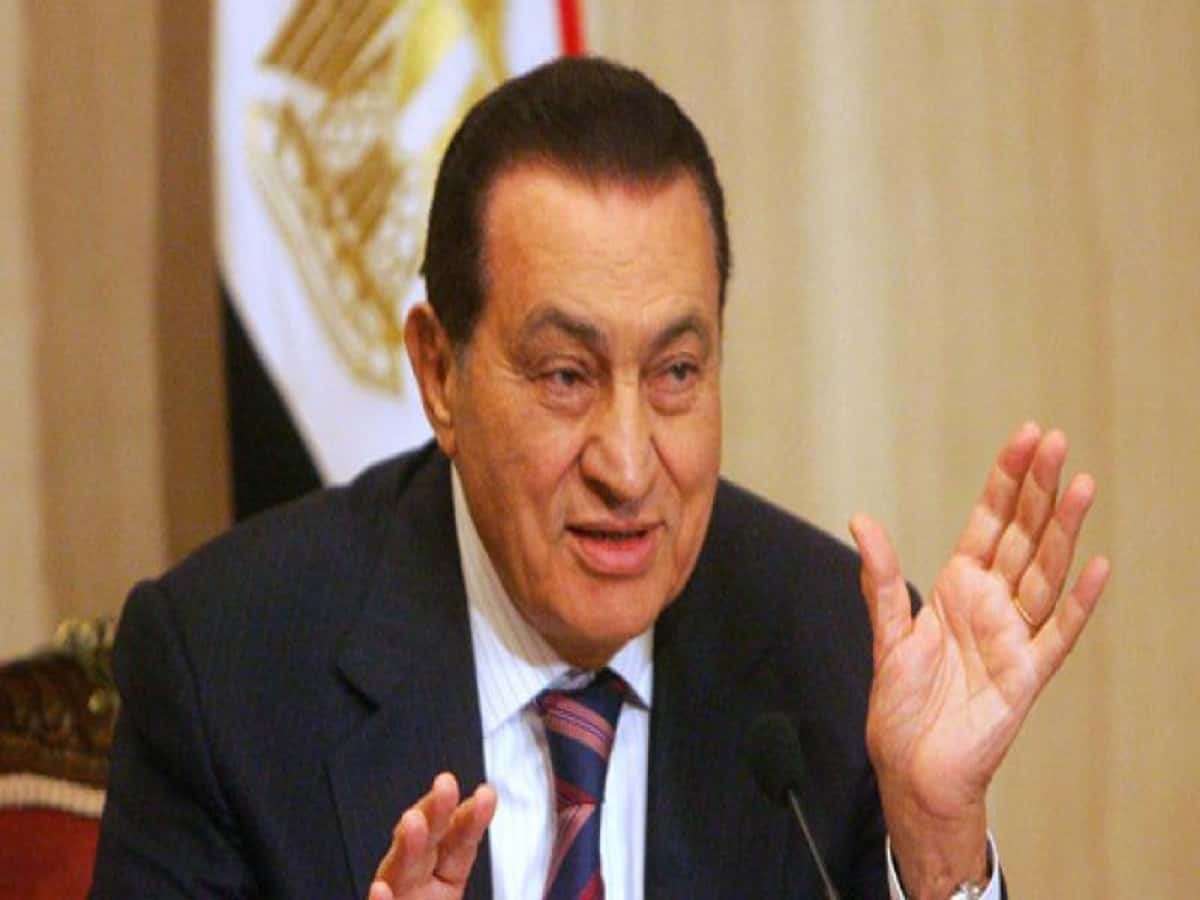Cairo: Egypt’s former long-time president Hosni Mubarak died on Tuesday at age 91 at Cairo’s Galaa military hospital, his brother-in-law General Mounir Thabet told AFP.
Thabet, a former high-ranking military official, confirmed the family was still at the hospital and said the Egyptian presidential office would organize the funeral.
Mubarak: Beginning – End
The former dictator became president in 1981 after Anwar Sadat’s assassination and ruled the country for three decades until he was ousted following mass protests against his rule in 2011.
History’s first verdict on Egyptian President Hosni Mubarak was rendered on Feb 1, 2011, when thousands of protesters forced the autocrat to vow not to run for office again.
From police brutality to the persecution of minorities, from the arrests of journalists to the suppression of political dissent, Mubarak’s Egypt had been a textbook police state.
Brutality in Hosni’s dictatorship
“If you want a serious interrogation, you send a prisoner to Jordan. If you want them to be tortured, you send them to Syria. If you want someone to disappear and never to see them again, you should send them to Egypt,” the former CIA officer Robert Baer said in 2004, six years before the Arab uprisings started.
Police brutality in Egypt was routine and pervasive. The torture was so widespread that the Egyptian government had stopped denying it existed, according to leaked cables released by WikiLeaks.
In 2015 alone, more than 1,250 forced disappearance and 267 alleged extrajudicial killings were recorded in Egypt with well over 40,000 political prisoners.
“Once in the custody of the security forces, prisoners are often subject to beatings, electric shocks, suspension in painful positions, forced standing for long periods, water-boarding, as well as rape and threatening to rape victims and their families,” HRW reported in 2011.
“When [the United States] wanted someone to be tortured, we’d send him to Egypt to have them tortured,” Pulitzer Prize-winning journalist Ron Suskind told ABC News.
In 2001, HRW estimated that 11,000 street children had been arrested and frequently detained for weeks in unsanitary and dangerous conditions, “often with adult criminal detainees who abuse them.” The children, the report reads, are “and denied adequate food, water, bedding, and medical care.”
Al Qaeda leader Ayman al-Zawahiri
Egyptians who were interrogated under the program include Abu Omar, a cleric kidnapped by the CIA in Milan in 2003, and a brother of Al Qaeda leader Ayman al-Zawahiri.
The CIA thought it had killed Zawahiri in a bombing strike in 2002 and believed it had possession of his head. In order to get confirmation the agency needed genetic material from Zawahiri’s brother, then a prisoner in Egypt.
According to journalist Ron Suskind, “Suleiman said, ‘It’s no problem. We’ll just cut the brother’s arm off and send it to you.’ ” Suskind said a CIA agent told Suleiman that a vial of blood would suffice.
Al Qaeda and Saddam Hussein
Prior to the U.S. invasion of Iraq in 2003, al Qaeda commander Ibn al Sheikh al-Libi was transferred to Egypt for interrogation. According to a U.S. Senate report, al-Libi was beaten and locked in a cage as Egyptian officials attempted to get him to confirm a connection between Al Qaeda and Iraqi dictator Saddam Hussein. Al Libi told his interrogators, according to the report, that Hussein was supplying Al Qaeda with chemical weapons. He later recanted.
Jailed in 2011
He was jailed for six years after the uprising but was freed in 2017 after being acquitted of most charges. During his detention, he was held at the Cairo military hospital – Maadi.
He was acquitted by Egypt’s highest appeals court of conspiring to kill protesters during the 2011 protests which led to his ouster. The 2017 ruling overturned the life term he had received in 2012 over the deaths of 239 people in Arab Spring protests against his rule.

